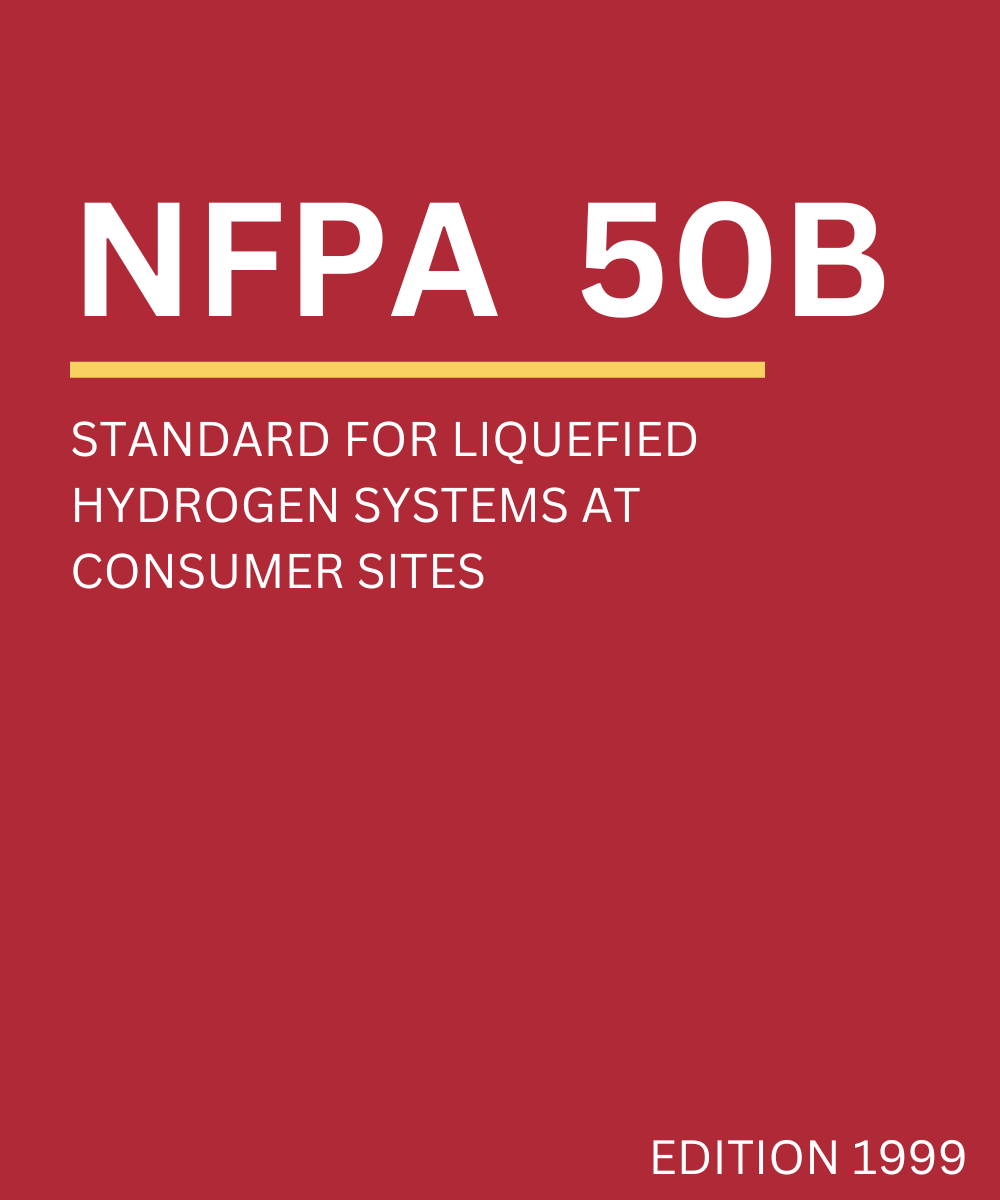
NFPA 50B, Standard for Liquefied Hydrogen Systems at Consumer Sites
The Standard for Liquefied Hydrogen Systems at Consumer Sites sets forth critical safety guidelines for the installation, operation, and maintenance of liquefied hydrogen systems. It focuses on ensuring the safe handling and storage of liquefied hydrogen, which presents unique risks due to its highly flammable and low-temperature nature. The standard provides detailed instructions to help facilities prevent hazards, protect personnel and property, and ensure compliance with safety regulations in environments where liquefied hydrogen is used or stored.
Current Version: 1999
Revision Cycle:
Fall 2004
Next Edition: Withdrawn
Status: Withdrawn
Introduction
NFPA 50B sets forth guidelines for the safe installation, operation, and maintenance of liquefied hydrogen systems at consumer sites. These systems are used where hydrogen is stored in liquid form, requiring specialized handling and safety protocols. The 2024 edition introduces updates aimed at enhancing safety and improving system integrity.
Key Changes in the Latest Edition
- Updated Safety Protocols: The 2024 edition introduces enhanced safety measures for handling and storing liquefied hydrogen.
- Revised Maintenance Guidelines: More detailed guidelines for maintaining systems in optimal condition to prevent accidents.
- Integration with Other Safety Systems: Strengthened coordination between liquefied hydrogen systems and other fire protection and safety mechanisms.
Notable Features of the Current Version
- Enhanced protocols for safe liquefied hydrogen storage and handling.
- Comprehensive maintenance guidelines to ensure ongoing safe operation.
- Integration focus for harmonizing liquefied hydrogen systems with other safety mechanisms.
Practical Implications
Operators need to implement the updated safety protocols and maintenance schedules to ensure compliance with the 2024 edition. This will enhance the overall safety and efficiency of liquefied hydrogen systems at consumer sites.
Conclusion
The 2024 edition of NFPA 50B focuses on improving safety measures and maintenance practices for liquefied hydrogen systems, ensuring their secure operation at consumer sites. Adhering to the new guidelines will increase the system’s reliability and safety.
Access NFPA 50B Now!
For further details, refer to the official NFPA 50B (2024) document or consult with certified professionals specializing in liquefied hydrogen systems to ensure compliance with the updated standards.
Book a free demo
Digitalize your Inspections with ZenFire
- Faster Inspection
- Deficiency Reporting
- Proposals
Everything you need in one Software.
Company
Support and Services
- (206) 456-8988
- 236 W 27th st Floor 12, New York, NY 10001, United States
- 299 Fremont St APT TH313, San Francisco, CA 94105
- A-302, Nyati Tech Park, New Kalyani Nagar, Wadgaon Sheri, Pune-411014
- hello@zentrades.pro
© 2025 ZenTrades Inc

